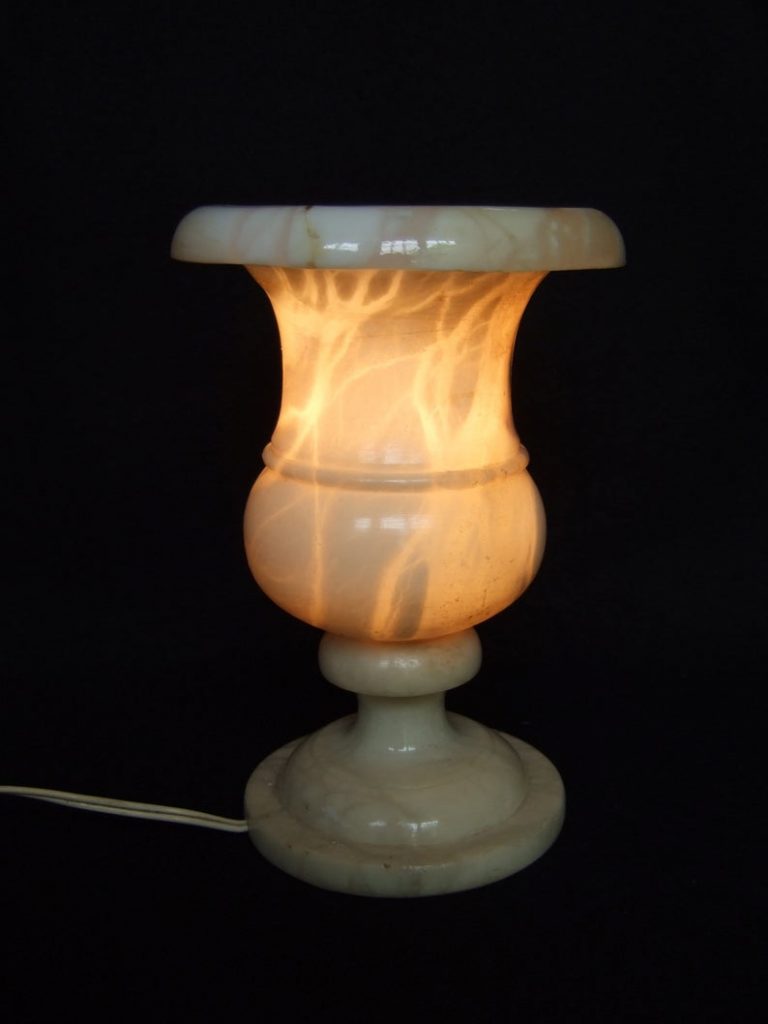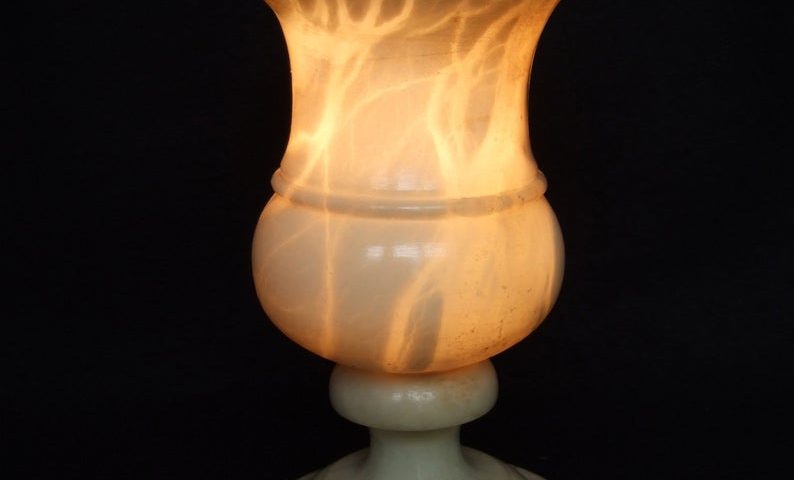Alabaster in Decorative Arts
Alabaster in Decorative Arts
Alabaster is popular because it is soft and easy to work or carve. The use of alabaster to create decorative objects and lamps with ornamental carving dates back to early civilization. A three foot vase with a relief from Warka, dating between 3500-3000 B.C., can be found in the British Museum. Fine alabaster busts from Sumer, 3000 B.C., are now in the Louvre. Alabaster was worked by the Egyptians as well. An ornate alabaster triple oil lamp in the form of three lotus flowers was found in the Tomb of Tutankhamun, (1356 B.C.). The sarcophagus of Seti I, (1304 B.C.) was made of alabaster. The use of Alabaster for decorative work is found through the history of Sumer, Babylonia and Assyria. The Romans made small ornamental objects and boxes while open work bas-reliefs was carved in India. From the 6th – 13th centuries, monasteries in Mediterranean countries, like Greece, France, Italy and Spain, used thin flat slabs of alabaster as windowpanes because of its translucency. Sometimes alabaster is tinted to accentuate the natural veining or to add color.
many artists use the authentic stone for its unique qualities and natural characteristics. The translucency of alabaster diffuses light softly and evenly, which is why they make marvelous light fixtures. many artists have several different shapes and sizes for wall sconces and pendant lighting. Many of their alabaster bowls are intricately hand carved with classical motifs, alluding to the history within the stone for a modern use.

